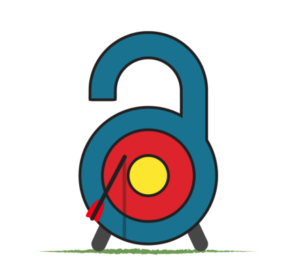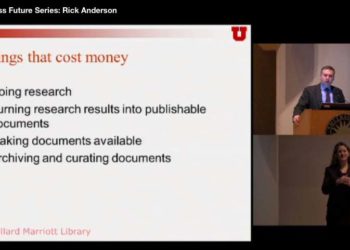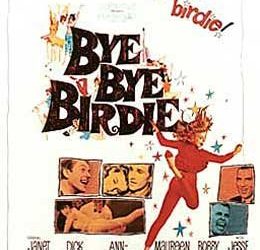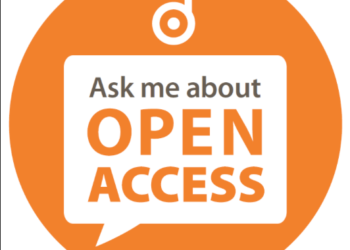
My last posting discussed the variety of definitions of Open Access (OA) currently being used within the OA community and some of the challenges created by this diversity of definitions. Today I’d like to discuss another issue around which there seems to be a significant diversity of views within the movement: that of ultimate goals.
In a recent op-ed in Nature (subscription required), Aled Edwards argues for a future in which “all scientific results are communicated in real time, at no cost, and without restriction on use as a matter of course,” and in which “anything that impedes the sharing of discoveries… (is) eliminated entirely,” concluding that “we should not be satisfied with anything else.” Compare this position (immediate free access to everything, with no reuse restrictions whatsoever) with that of Robert Darnton, who has publicly argued that it’s fine for “non-commercial journals whose sole purpose is to disseminate knowledge” to “charge reasonable prices.” Both Darnton and Edwards would, I’m confident, characterize themselves as advocates for OA. But each has a very different vision of what the ultimate goals of the movement should be. And more importantly, those two visions are not just different; they’re mutually exclusive: they can’t coexist.
But the acceptability of charging for access to scholarship is only one of many dimensions along which there is significant disagreement among key players in the OA movement. There is in fact a wide variety of visions for the future within the OA community, and many of them are mutually exclusive. The current landscape of opinion includes, for example, the following positions:
Embargoes
- Embargoes are acceptable as a permanent feature of the OA landscape (Research Councils UK)
- Embargoes are acceptable only for now, as a temporary compromise measure (SPARC, Peter Suber)
Charging for access
- Access tolls are acceptable in scholarly non-profit journals (Darnton)
- Access tolls are also acceptable in scholarly for-profit journals (Elsevier, Springer, Wiley, etc. — all of whom are both major OA publishers and major toll-access publishers)
- Toll access is unacceptable in principle, at least with regard to the scientific journal literature (Aled Edwards, Jean-Claude Guédon, the Confederation of Open Access Repositories)
CC licensing
- CC-BY licensing, or the equivalent, is an essential feature of OA (SPARC, PLOS, Gates Foundation, Ford Foundation)
- CC-BY is an optional feature of OA (Directory of Open-Access Journals, Open Access Scholarly Publishers Association)
Public access vs. OA
- Public access is a suitable goal (U.S. Congress, National Institutes of Health, and every institution whose repository does not require CC BY licensing or the equivalent or plan eventually to do so)
- Public access is only a temporary way station on the road to full and universal OA (Jean-Claude Guédon, and every institutional repository that hopes eventually to require CC BY licensing or the equivalent in its IR)
Freedom to choose
Choice is one of the most difficult policy dimensions of an OA future. Given that, based on the available evidence — see here, here, and here, for example — scholarly and scientific authors themselves seem to have quite mixed views about OA (depending in significant part on how it’s defined), to what degree, if any, should authors be allowed to choose for themselves whether and how their original work will be made available on an OA basis? Does it matter whether their work is based on publicly-funded research, or whether they’re public employees? To what degree is it appropriate for funding agencies to require the researchers whose work they fund to adopt OA, and to say what constitutes OA for their purposes? Under what circumstances (if any) might institutional OA mandates represent an infringement on academic freedom? There is an enormous range of opinion on these questions, and different points on the spectrum are reflected in some of the various positions and policies to which I’ve linked above. Lobbyists for commercial publishers and for OA advocacy organizations work behind the scenes both for and against the maximization of author choice, and when the issue is raised in meetings and on listservs, the conversation can get pretty heated.
Implications
Clearly then, we’re seeing within the OA movement diversity along at least two dimensions: a diversity of definitions of OA (as discussed in my previous posting), and a diversity of views as to what constitutes an acceptable scholarly-publishing future. It would seem that this reality begs a fundamentally important question: is this kind of diversity a good thing, the kind that adds a salutary richness and complexity to the OA community? Or is it a problem that needs to be solved?
It’s important to bear in mind that diversity doesn’t have to breed conflict. There’s no reason why people of differing cultural backgrounds, races, or religious views can’t live together in harmony — unless, of course, a defining belief of one or more of those groups is that the world would be a better place without one or more of the others. Unfortunately (as history has tragically shown us again and again), not all worldviews are equally capable of coexistence with other ones.
Not thinking about these conflicts ahead of time is a sure recipe for handling them poorly—and pretending they don’t exist is a sure recipe for failing to think about them.
The same goes both for definitions of OA and for future scenarios of the scholarly-communication landscape. One might reasonably hold that both CC BY and CC-BY-NC are legitimate OA options. But logically, you can’t hold that CC BY is the only legitimate OA option and that CC-BY-NC is also a legitimate OA option. Those two positions are mutually exclusive. By the same logic, you can’t simultaneously hold that we must have a world without any toll access and that it’s okay to have a world with some toll access. The problem we have right now is that such mutually-exclusive positions (and others) are, in fact, held by different people and organizations within the OA movement, all of whom consider themselves to be advocates for something called OA and believe that they are working to move us towards the right kind of future.
Unfortunately, the movement is caught between a rock and a hard place in this regard. As long as things remain vague and ill-defined, the tent of OA can remain large and inclusive. That’s the upside. The downside is that as long as people who are working towards mutually incompatible goals continue to believe that they are working towards the same goal, the closer the movement comes to disruptive conflict when the incompatibilities of its members’ visions come to the surface, as they inevitably will. Not thinking about these conflicts ahead of time is a sure recipe for handling them poorly — and pretending they don’t exist is a sure recipe for failing to think about them.
On the other hand, creating a firm definition of OA and defining a clear vision for the future will almost certainly alienate at least some who want OA to be different and who want to work for a different future.
But these are challenges faced by every movement that seeks to create change. The question is at what point, and how, these particular challenges will be faced and dealt with. Will they be dealt with mindfully and strategically now, or will they be ignored until they can’t be anymore — at which point they may have done serious damage to the movement?
(By the way, at his always-useful Open and Shut blog, Richard Poynder has recently been thinking about similar issues.)
Discussion
9 Thoughts on "Diversity in the Open Access Movement, Part 2: Differing Goals"
There is also the issue of whether CC-BY-NC-ND is a legitimate option. As an author, one of my main concerns about CC-BY is that it is designed to permit ‘mash-ups’ by creative artists. I don’t think this is appropriate for scholarly and scientific work, where selective editing and repurposing can seriously distort the integrity of the writing and the findings. One example I have proposed might be a social science study of an extremist group where, as a matter of science, we might write about ‘recovering the rationality of membership in the group’ in order to understand why members join. We might then see this re-edited by group members as scientific support for the rationality of joining the group as a response to perceived problems in their lives and context. CC-BY gives the author no comeback from being represented as endorsing the extreme beliefs because the author has given up control over the end-use of their text. Social science (and humanities) scholarship is much closer to other forms of content creation where copyright exists for good reasons of artistic integrity as well as securing a fair return to creators and publishers.
Depends which CC BY license we’re talking about here… 3.0 has some restrictions concerning reuse and adaptation if licensed content is manipulated in a way that might bring its original creator into disrepute. See Section 4(c) of the license’s legal code for exact wording, but it’s something along those lines.
Worth noting that the publisher lobbying effort linked to in this post was considered but never moved forward and is not around today. The PRISM website appears to have been purchased by an online advertiser using it as a link farm.
When you say “thinking about these conflicts ahead of time” I am not sure what time you are referring to. There is no single decision point in OA; rather the ongoing spectrum of global activities reflect the messiness of the movement. For example, under the new Trump Administration the OSTP memo creating the US Public Access program may well be OBE. Now is the time for the different positions to do the usual pushing and shouting, to an unpredictable end. This is how policy making works, especially revolutionary policy making on a global scale. I see no prospect for unifying the OA movement, if that is what is being called for here.
That’s a good point, David. I’m not actually calling for “unification” — like you, I have no idea how such a thing could be done or even whether it’s ultimately desirable. What I am suggesting is that the OA movement would be wise to acknowledge the meaningful differences (which in some cases amount to genuinely competing visions) between the various end games that are currently being pursued, and to “deal with them mindfully and strategically now” instead of continuing to pretend that they don’t exist or don’t matter. Of course, it’s easy to say “you guys should do X,” but when “you guys” are not a monolithic entity that’s much easier said than done.
Why is not CC-BY-SA preferred over CC-BY? Isn’t the point of SA to ensure that adaptations of the material are also made available?
Reality is a shock! As I have stated on this site many times there is no free lunch. OA is not free it is simply a transfer of funds from libraries or whomever to the author who may or may not cover the costs with a grant and if the publication is covered by a grant, the granting authority is raising money to pay the grant! Lastly, just how much money does a granting authority want to commit the publishing.
We see costs of OA going up and funding either remaining rather stable of going down. We see competition in the market for OA funds on behalf of both the author and the publisher. Will OA emerge as a stifling movement based on limited funding committed to publishing? In short, the future does not appear too rosy for the OA movement.
Lastly, what about the Humanities and Social Sciences. Who is going to fund these folks? As it is they are like Tiny Tim…



